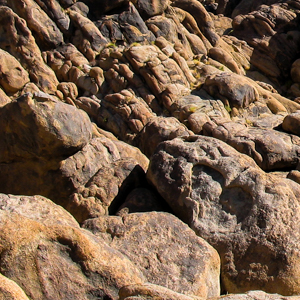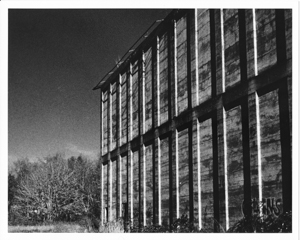Article on Tanukis
"Tanuki, you old toad-eatin'
rascal"
by Mark Brazil
The tanukiis found throughout Japan. In ceramic form it is even more widespread, perhaps
even more numerous than the wild creature itself. This rather stout, short-legged creature
with its short, bushy tail is an atypical member of the dog family with a distinctive
facial mask.
The tanuki's English name is raccoon dog,
though if you search for that term on the Internet you may be surprised, as I was, to find
that lots of Americans call a dog used for hunting raccoons a raccoon dog! That old
chestnut of mistranslations, tanuki as badger, is as well represented on the Internet as
it is elsewhere.
The Japanese name for the badger,
an entirely different animal, is ana-guma. Not only that, some Web pages about tanuki actually feature
pictures of raccoons.
The tanuki is the subject of
innumerable amusing and intriguing myths and folk tales, and is often linked with the
teakettle because of its pot-bellied appearance. Its image is that of a jolly, carousing
and womanizing character. Like the kitsune (red fox), it is a master of shape-changing
and disguise. The term tanuki-gao is often used to describe women with rounded facial
features, in comparison with the more tapering kitsune-gao or "fox-face." In the past, it was hunted in Japan for its meat, its
black-brown fur (used for making brushes) and its bones, which were reputed to have
medicinal qualities.
The tanuki has also been introduced in several
countries. Native to Japan, southeastern Siberia and Manchuria, tanuki were introduced to
the western parts of the former U.S.S.R. for fur farming. Some escaped (or were released),
and since the 1950s have spread westward into Scandinavia, and south even as far as
France.
Whereas most members of the canid (dog) family live in open
areas, tanuki occur in heavily wooded areas, often close to water. They are also more
omnivorous than most other canids, and this is reflected in their teeth, which are
relatively small. Their molars are enlarged, enabling them to tackle plenty of plant food,
whereas their bone-shearing carnassial teeth are rather small.
As its teeth attest, the tanuki has a diverse
diet, strongly dependent on the season and the region. It relishes invertebrates, small
animals (frogs, lizards, rodents and ground-dwelling or ground-nesting birds) and
(particularly in autumn) seeds and berries. Where they live by the sea, tanuki will also
scavenge along the tide line in search of crabs and other marine life that washes up. They
are most active soon after sunset throughout the evening, and then again in the early
hours of the morning, during which time they may wander for 10 to 20 km in search of food.
Amazingly, raccoon dogs are one of'
the few animals able to eat toads. Apparently they produce such copious saliva that they
are able to dilute the toads' toxic skin secretion.
As tanuki have moved into suburban and even urban
areas in Japan during the 1980s and 1990s, they have taken to feeding at rubbish dumps and
are even fed by local people in their gardens. I was initiated into LOBATAWA, the Loyal
Order of Backyard Tanuki Watchers, in a Kamakura garden in the early 1980s, where readers
of this column had tamed their local tanuki with offerings of food. Residents are not kept
awake at night by tanuki, for unlike other members of the dog family, they do not bark.
The tanuki is an unusual member
of the dog family in many ways, not just in being barkless and having such an omnivorous
diet, but also because it almost hibernates. It doesn't actually sleep through the
winter, but it does put on weight in autumn and then retreat into its burrow, from
November until about April. It may emerge at times to feed, and in the warmer parts of
their range, may hardly sleep at all.
Tanuki mate and rear their young
in the spring, like most temperate mammals, so in late summer the young tanuki are
learning their way around their home forest in preparation for the coming autumn and their
first winter.
In some respects the tanuki has fared well during
the last two decades. Winters during the 1980s were mild with rather brief periods of snow
cover, hunting declined and perhaps as a result tanuki were able to extend their range
into suburban and even urban areas. Because highly nutritious human food is plentiful in
suburban habitats, these may actually be capable of supporting more tanuki than natural
habitats.
Luckily, not only for tanuki, but also for other
species of wildlife here, the numbers of hunters in Japan declined during the 1980s too.
In a period of 10 years the number of tanuki killed by hunters halved from a peak of about
75,000 in 1981 to about 33,000 in 1990, according to Environmental Agency figures.
Unfortunately, its increased population densities
in urban areas have led to new problems. At unnaturally high population densities,
diseases are able to spread more readily than when their hosts occur at low densities, and
it is disease that is now hitting the tanuki hard.
Recent research at Osaka City University
indicates that many tanuki have become afflicted with sarcoptic mange, an uncomfortable
condition caused by a parasitic mite. Infected tanuki suffer from skin deterioration and
progressive hair loss leaving them partially, or even entirely, bald. In this state their
likelihood of suffering and dying from hypothermia is greatly increased, and since about
1990, many have been found dead during winter.
Mange has been reported in a number of wild
canids, most notably the red fox and the coyote, and since 1981 among Japanese raccoon
dogs too. It appears that mange has been able to spread out from suburban areas with high
tanuki densities into wilder areas too, leading to serious declines particularly in the
Kanagawa and Miyagi prefecture populations. During the late 1980s and early 1990s, mange
spread rapidly and the numbers of animals suffering increased greatly, especially in the
relatively milder Pacific coastal prefectures.
Perhaps as the tanuki population falls it will
become more difficult for the mange mite to spread. Let's hope so. A bald tanuki is
not a pretty sight.
The Japan Times - July 29, 1998
Current Conditions |
|
Temerature: 52.7° |
|
Dew Point: 50.1° |
Humidity: 91% |
Rainfall: 0.35 in |
Presure: 1004.2 mb |
Wind: 6 mph SW |
|
High: 53.4° |
Low: 45.7° |
Sunrise: 07:00 |
Sunset: 17:48 |
Last Updated: 07:29 on 29 22 |
|



